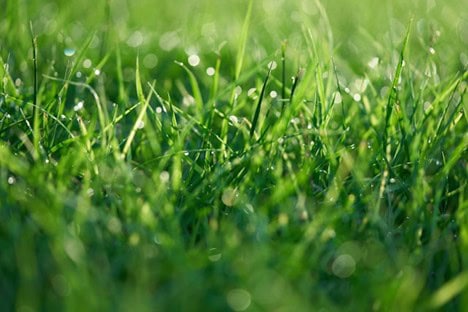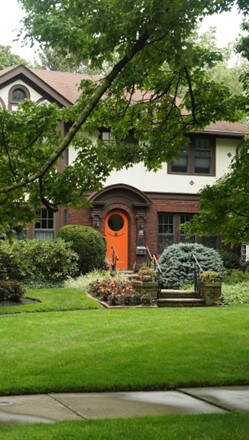
A thick, green lawn is the dream of nearly every homeowner, but achieving it often requires more than just regular mowing and watering. When grass begins to thin, bare patches spread, or weeds creep in, one of the most effective remedies is overseeding. This is the practice of introducing new seed directly into an existing lawn to increase density and boost resilience.
Still, overseeding alone isn’t always enough. If the soil is compacted, waterlogged, or unable to circulate air properly, new seeds will struggle to germinate and grow. That’s where soil ventilation, sometimes referred to as aeration, comes into play. By opening channels in the ground, this process improves air, water, and nutrient flow to the root zone, creating ideal conditions for fresh grass to establish itself.
Why Overseeding Alone Isn’t Enough
Overseeding is often promoted as a quick fix for thinning lawns, but in reality, it’s only half of the equation. Seeds need several conditions to germinate successfully:
Contact with soil – Without direct seed-to-soil contact, germination rates drop dramatically.
Moisture retention – Consistent moisture is critical during early stages of growth.
Oxygen access – Roots require oxygen to develop; compacted soils reduce air exchange.
Nutrient availability – Essential nutrients like nitrogen, potassium, and phosphorus fuel growth.
If your soil is dense, layered with thatch, or unable to breathe, simply scattering seed won’t address the underlying problems. New seedlings may sprout but often fail to mature, leaving the lawn patchy and weak.
Soil ventilation is what bridges the gap between dropping seed and growing a lush, full lawn.
What Soil Ventilation Really Means
Soil ventilation involves creating openings in the ground that allow oxygen, water, and nutrients to move deeper into the root zone. Unlike compacted soil, which suffocates roots, ventilated soil provides space for roots to expand, seedlings to establish, and microorganisms to thrive.
There are several ways homeowners and professionals create this effect:
Core removal – Extracting plugs of soil and thatch, leaving open channels.
Spike penetration – Poking holes that temporarily relieve compaction.
Liquid treatments – Using products designed to break down dense soil structure.
Regardless of method, the end goal is the same: open up the soil so it can better support grass growth.
How Soil Ventilation Supports Overseeding Success
Improves Seed-to-Soil Contact
New grass seed must touch soil in order to germinate. When you ventilate the lawn, the holes and loosened top layer create ideal crevices where seed can settle in. This ensures seeds are not just sitting on top of thatch or grass blades, where they’re likely to dry out, blow away, or be eaten by birds.
Enhances Moisture Retention
Young seedlings need constant moisture, especially in the first 2–3 weeks after germination. Ventilated soil absorbs water more efficiently, reducing runoff and ensuring it reaches the seeds below. The tiny pockets created during the process also act like miniature water reservoirs, keeping the seedbed consistently damp.

Boosts Oxygen Flow to Roots
Roots require oxygen to respire and grow. In compacted soils, oxygen exchange is minimal, stunting seedling development. By opening up pathways in the ground, ventilation ensures roots have the oxygen they need to establish quickly and grow deeper, resulting in stronger, more drought-resistant turf.
Increases Nutrient Uptake
Fertilizers applied during overseeding are far more effective in ventilated soils. Nutrients can move freely through the loosened channels, reaching root systems instead of staying locked at the surface. This is particularly important for phosphorus, a nutrient that plays a key role in root development.
Reduces Competition from Weeds
Thick, well-established grass naturally outcompetes weeds. Soil ventilation helps new seedlings grow faster and fill in bare spots before opportunistic weeds take over. The result is a denser, healthier lawn that requires fewer chemical weed controls.
Timing Matters
For most cool-season grasses, early fall is the optimal time for combining soil ventilation with overseeding. The soil is still warm from summer, encouraging fast germination, while cooler air temperatures reduce stress on seedlings. In addition, fall typically brings more consistent rainfall, reducing the need for constant irrigation.
For warm-season grasses, late spring through early summer is usually best. The grass is in its active growth period, giving seedlings the strongest chance to establish.
Pairing Soil Ventilation with Overseeding
Mow the Lawn Short
Trim your grass lower than usual (but not so short that it scalps the turf). This allows seed and soil treatments to penetrate more effectively.
Ventilate the Soil
Choose your preferred method, core removal for long-lasting relief, spike penetration for quick fixes, or liquid products for convenience. Ensure the treatment covers the entire lawn, not just trouble spots.
Spread the Seed
Select a grass variety suited to your region and existing turf. Apply evenly using a broadcast spreader, aiming for thorough coverage without clumping.
Fertilize
Use a starter fertilizer rich in phosphorus and potassium to encourage rapid root development.
Topdress if Needed
For especially bare or uneven lawns, lightly topdress with compost or soil to cover the seed and improve contact. Keep the top inch of soil moist at all times for the first 2–3 weeks. Light, frequent watering is more effective than deep, infrequent watering during this stage.
Limit foot traffic on newly seeded areas until the grass is well established. Ventilating when soil is too dry or too wet: Dry soil is hard to penetrate, while saturated soil can become muddy and damaged. Aim for slightly moist conditions. Overseeding without loosening compacted soil leads to poor results.
Always match your seed blend to your climate, sun exposure, and existing turf type. Overseeding is not a one-and-done process. Watering and fertilization in the weeks following are just as important as the initial treatment.
Long-Term Benefits of Combining the Two
When overseeding is paired with soil ventilation, the lawn doesn’t just look better in the short term – it becomes healthier and more resilient overall. Benefits include:
- Thicker turf density that resists weeds naturally.
- Deeper root systems that improve drought tolerance.
- Improved drainage that prevents standing water and fungal issues.
- Year-round curb appeal with fewer bare patches or thin spots.
In other words, ventilation gives new seed a head start, while overseeding ensures your lawn remains full and vibrant for seasons to come.
Final Thoughts
Overseeding can transform a tired, patchy lawn into a lush carpet of green—but only when the conditions are right. By focusing on soil ventilation first, you’re giving seeds the access to air, water, and nutrients they need to flourish. Whether you use core removal for maximum effectiveness or a simpler method for light touch-ups, the principle remains the same: healthier soil equals healthier grass.
If you want overseeding to deliver long-lasting results rather than temporary improvement, start with the foundation. Ventilate the soil, prepare the seedbed, and then overseed—your lawn will reward you with thicker coverage, stronger roots, and a healthier appearance that lasts year after year.